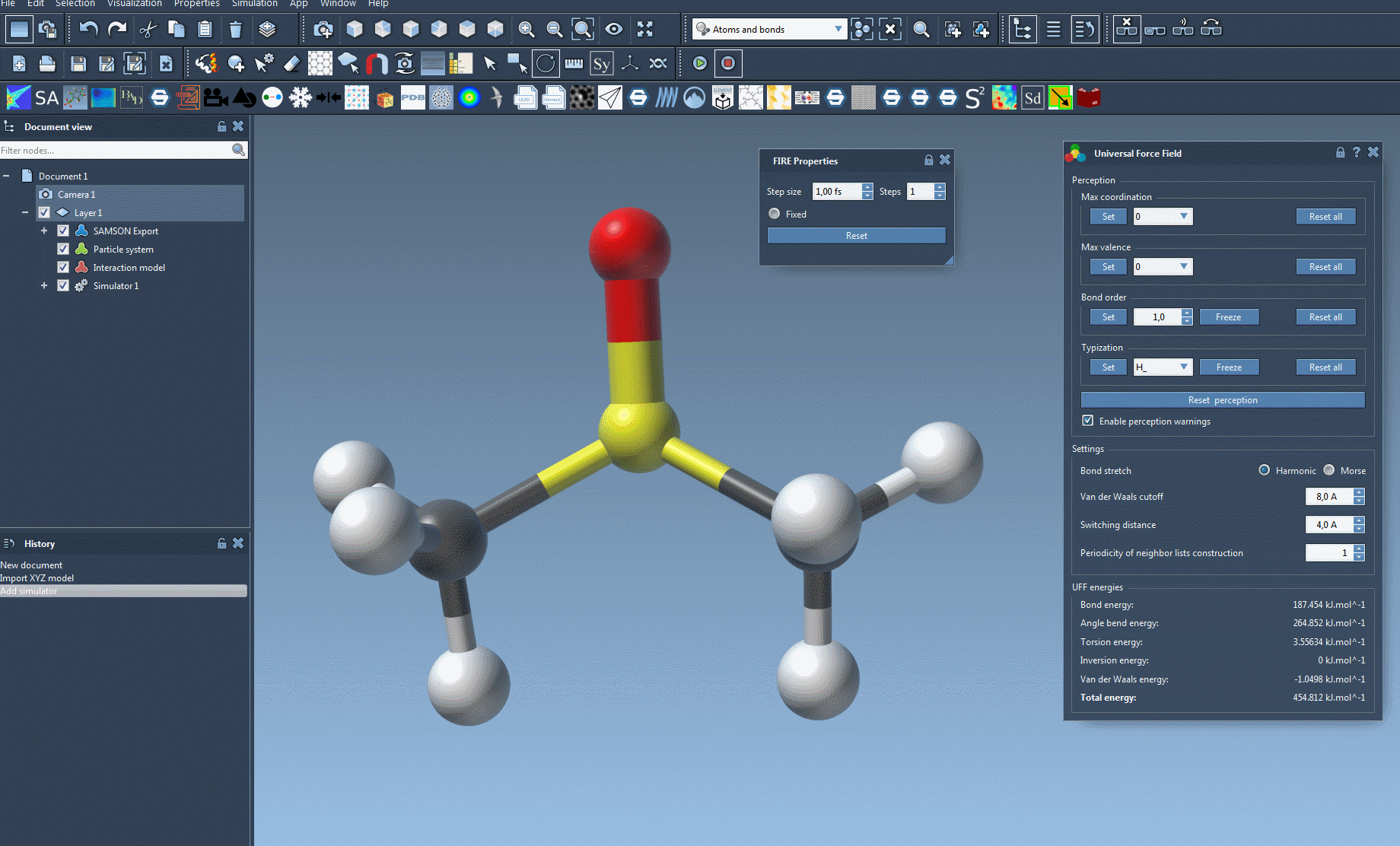When performing molecular mechanics simulations, using force fields like the Universal Force Field (UFF) is a standard and powerful approach. However, researchers often find themselves frustrated when their simulations don’t quite behave as expected—energy plateaus, unrealistic geometries, or convergence issues.
One often overlooked step that can significantly improve simulation outcomes is tuning the force field parameters. In SAMSON, UFF comes with several adjustable parameters that offer fine control over bond interactions and Van der Waals (vdW) interactions. These settings help adapt the force field behavior to the particularities of your system.
Why tune UFF parameters?
By adjusting key parameters, you can influence the accuracy and stability of your simulations. For example:
- Choosing between Harmonic and Morse bond stretch models affects how bond lengths respond to stretching—Morse potentials can provide more physical accuracy near bond dissociation.
- Altering the van der Waals cutoff distance helps screen interactions that are too weak to affect the system meaningfully, speeding up simulations while maintaining realism.
- The switching distance lets you control how smoothly vdW interactions decay, preventing abrupt changes that might destabilize the system.
- Finally, tuning the periodicity of neighbor list construction affects performance—recomputing too often is costly, but too infrequently might miss important updates.
These options are accessible in the UFF parameter window once you start the simulation.

Best practices for setting parameters
- Start conservative: Use default values when testing a new system to avoid introducing unexpected behavior.
- Switch to Morse: Try the Morse potential for systems with significant bond stretching or potential bond breaking (e.g., during reactions).
- Adjust vdW distance: For large or sparse systems, increasing the cutoff might capture more interactions; for dense systems, reducing it can improve performance.
- Tweak switching smoothness: If atoms experience abrupt energy jumps, smooth the transition by increasing the switching distance.
This level of control is especially useful for experienced modelers who want to explore how different settings impact simulations. But even for students or early-stage researchers, understanding these knobs can make UFF a more intuitive and rewarding tool to work with.
When fine-tuning helps
Consider using parameter adjustments in the following scenarios:
- You observe unstable atom movements during simulation runs
- You’re modeling coordination complexes or reactive systems
- You aim to speed up simulations for a first-pass analysis
These small adjustments can mark the difference between a simulation that diverges and one that reveals meaningful behavior.
To learn more and see these parameters in action, visit the UFF tutorial page in the SAMSON documentation.
SAMSON and all SAMSON Extensions are free for non-commercial use. You can download SAMSON at https://www.samson-connect.net.





